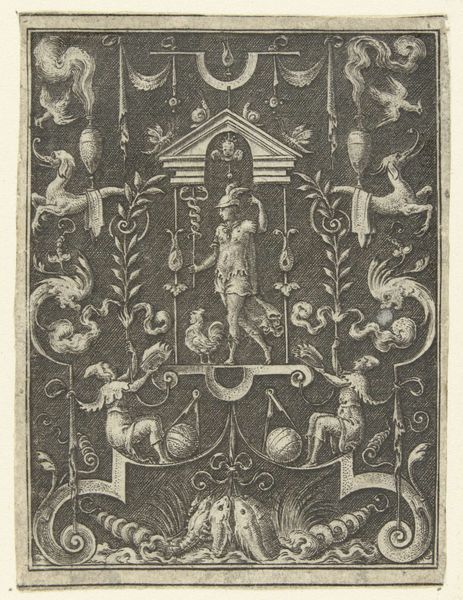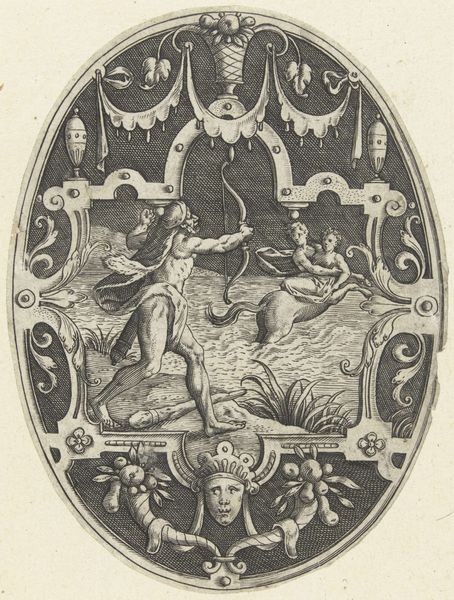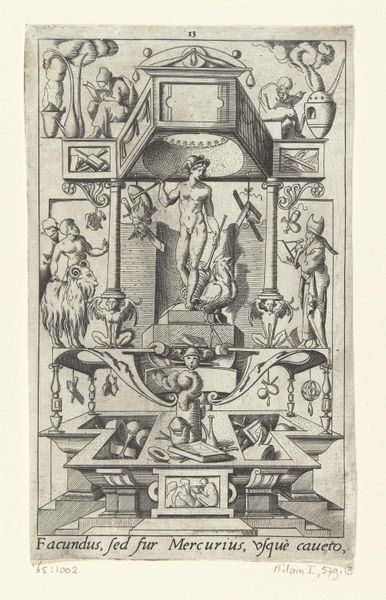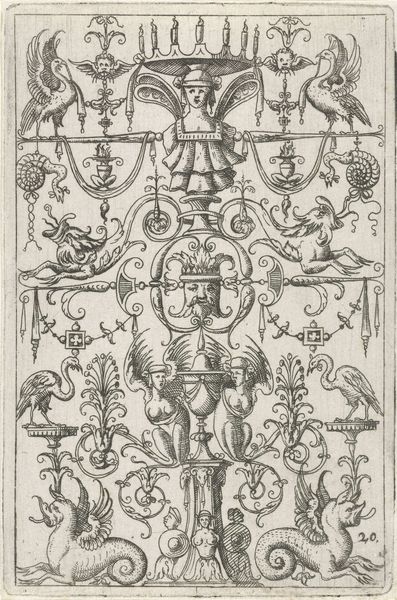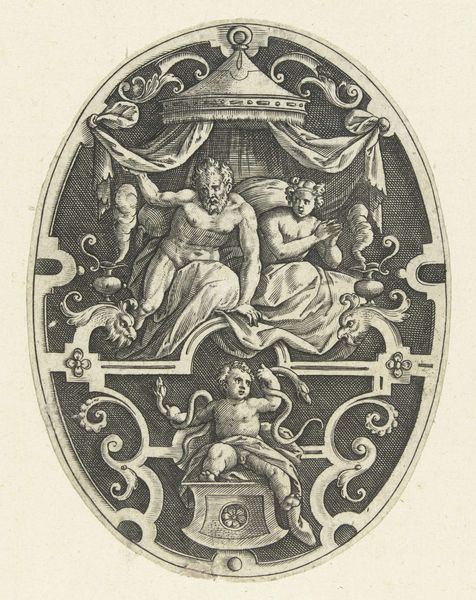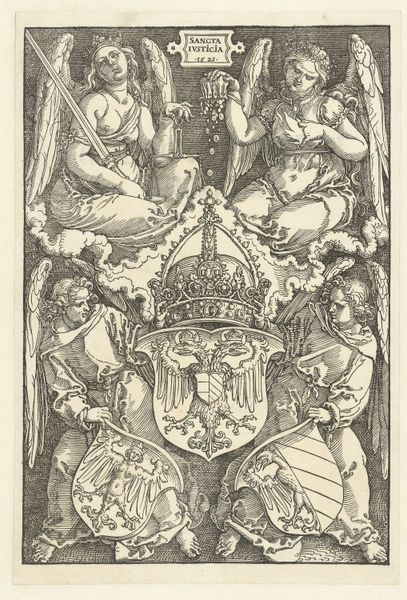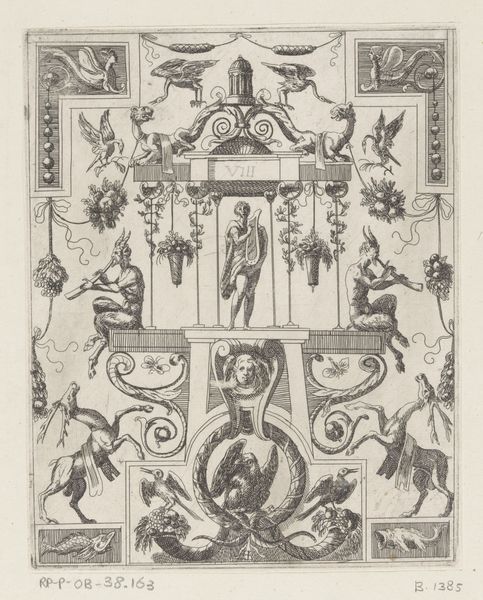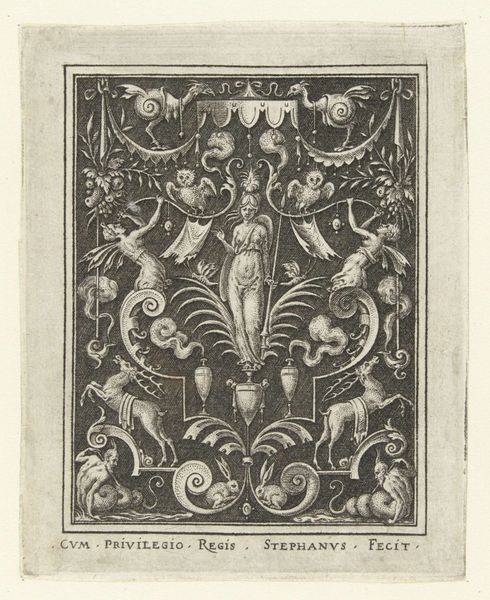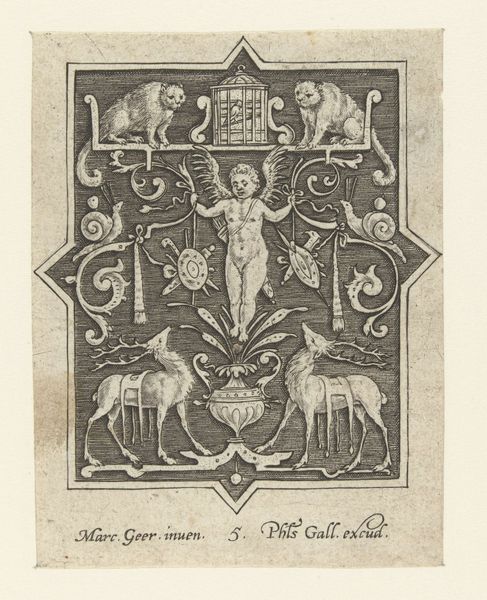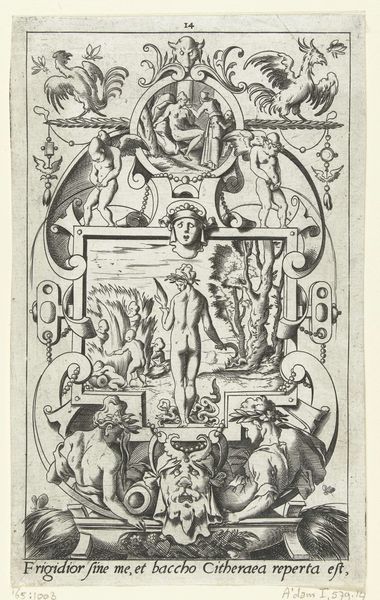
drawing, print, intaglio, engraving
#
drawing
#
allegory
#
pen drawing
# print
#
intaglio
#
old engraving style
#
mannerism
#
figuration
#
11_renaissance
#
pen-ink sketch
#
line
#
pen work
#
engraving
Dimensions: height 75 mm, width 56 mm
Copyright: Rijks Museum: Open Domain
This tiny print, "Bellona onder een baldakijn," was made by Etienne Delaune in the 16th century using engraving techniques. Engraving is an intaglio process, meaning the image is cut into a surface, in this case, a metal plate, and the incised lines hold the ink. Look closely, and you'll notice the incredible detail achieved through this painstaking method. The goddess Bellona is depicted under a canopy, flanked by mythical creatures, all rendered with remarkable precision. The choice of engraving speaks volumes about the era. In the 16th century, printmaking was essential for disseminating information and artistic ideas. The labor-intensive process of engraving imbued prints with a sense of value and prestige, elevating them beyond mere reproductions. Consider the social context: prints like these were luxury items, accessible to a limited audience. Delaune's skill as an engraver would have been highly sought after, reflecting the growing importance of artistry and craftsmanship in early modern Europe. Ultimately, understanding the materials and processes behind this print enriches our appreciation of its artistic and cultural significance. It bridges the gap between craft and fine art, revealing the intricate relationship between artistic creation and the world it inhabits.
Comments
No comments
Be the first to comment and join the conversation on the ultimate creative platform.


